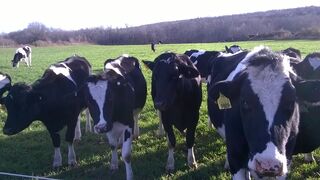Wisdom
What Does It Mean to Leave a Legacy?
Why his kids' book became a serious medical writer's hoped-for legacy.
Posted September 22, 2022 Reviewed by Vanessa Lancaster
Key points
- Leaving a legacy is about more than money or material possessions.
- A legacy can be the sum of what our lives have taught us or how we make others feel about themselves.
- Think about what matters most to you, and why it might be important to you to "leave it behind."
When I recently told a friend I had commissioned a new Spanish translation of my indie-published children’s book, he asked how much money I had made on it. I told him I don’t regard this particular one of my books as a money-making venture. I call it a “heart project.” The money it has cost me for production, printing, promotion, and translation—the book is now available in four languages and a professionally produced digital audiobook—was an investment in my legacy.
Yes, my legacy. What I most wish to leave behind when I’m no longer here to share the story and savor the emotion that crosses listeners’ faces when I read it to them. It’s wanting to continue touching people in such a positive way through this book—and the related stories I’ve written for a series I hope eventually to publish.

This project hasn’t been about an expectation of windfall profits. However, I continue to believe that those profits could materialize if my marketing efforts succeed in sharing the story of the runaway cow in Connecticut with a wider audience than I have reached so far. I believe in the story’s power and appeal because I have seen it repeatedly touch readers of all ages, from small children to very senior-age women and men.
The more readers it reaches, the more people will be touched by what is, on the surface, a funny story about a black Angus cow who runs away from her farm in Connecticut one hot July afternoon. She was spotted around an eight-mile area for five months, traveling with a herd of deer—not altogether unheard of in farm country. She was eventually recaptured after several failed attempts and relocated to an animal sanctuary. It was also determined that she was a cow and not a bull as she had been erroneously labeled by animal experts who only saw her at night: Angus bulls typically don’t have horns, and they couldn’t see her udder in the dark.
I followed the periodic news accounts of the roving bovine in my local newspaper in Connecticut, my home state, where I was living at the time. Although I am a journalist rather than a novelist, I couldn’t quit the idea that there was a bigger tale to be told from this story of inter-species friendship and camaraderie. I wondered: How did the cow and deer understand each other? How did they know they were safe together? What did they talk about?
The beauty and wonder of writing a children’s story is you can assume magical things—like talking animals. It’s exactly what the famed ancient Greek writer Aesop did in his fables: Convey complex ideas and wisdom through the mouths of animals. It somehow makes the medicine a bit easier to swallow than if it’s served up by human characters who can seem too much like real-life people we know.
In my ignited imagination, the story of Wilhelmina—the name given her by the local townsfolk in Milford, Connecticut, who regularly spotted the cow and her deer friends around the area—became an adventure tale of running away in search of a place where she could feel truly accepted and free to be the free spirit she knew herself to be. Her farmer “owners” only cared that she provided milk for their breakfast cereal. What she thought or felt mattered not at all to them.
It was first with the deer and eventually with the imaginary Betty, the kind old Scottish lady farmer who adopts Wilhelmina, that our cow heroine realizes she is truly at home. At last, she is “seen” as she sees herself. She is accepted and loved exactly as she is.
So how did a charming “light” story (beautifully illustrated by Vermont artist Katie Runde Sanchez) about an 800-pound cow-on-the-lam in Connecticut become a “serious” health/medical journalist’s hoped-for legacy?
Well, you could say it is the distillation of my wisdom. A boiled-down-to-its-essence reduction of what my life has taught me—about what it means to accept oneself, to be free, to seek others who embrace one exactly as s/he is, to be courageous in pursuing growth and change as a means toward becoming all one can be.
This is why children have loved Wilhelmina: They see themselves in her feeling “different” because she is, after all, a cow, and her friends are all deer and, later, a woman. We’re all different in some way or another. But Wilhelmina lets kids know that not only is being different okay, it is what makes them special and unique.
Of course, it’s important to remember that what is considered different always varies according to whom is deciding “the norm.” Those of us who have had to work especially hard to push past the stigma of being different—for having a “different” sexual orientation, or having a medical diagnosis that makes some uneasy, or simply for being or not being one thing rather than another—know the sense of freedom and liberation that come from rejecting the shame others expect us to feel for our difference.
Older folk relate to Wilhelmina’s powerful drive to find kindred spirits, her peeps. We all have that drive, our fond desire for others who enjoy our company, listen to our life’s stories, help make the moments that will become treasured memories, laugh with us and share our sorrows too.
I call Wilhelmina Goes Wandering “a fable for kids ages five to 105." While little kids may relate to the cow running away from home because “she don’t get no respect,” older folk see a whole other level of meaning. Many of us know how much courage it takes to leave a familiar place that may or not feel safe, to seek a different place where we can truly feel at home. Many of us know about "coming out" in some way or another.
These thoughts are some of the essential pieces of wisdom I have gleaned from my life. I've made them understandable for children and relatable for grown-ups too. That's why I would like my reimagined story of the runaway cow in Connecticut to be my legacy.
What do you want your legacy to be?




